Bibliothèque Nationale de France: The Reopening


Réouverture du site Richelieu de la Bibliothèque nationale de France:
en anglais ci-dessous – in English below
Le site historique Richelieu de la Bibliothèque nationale de France (BnF) situé dans le centre de Paris vient de réouvrir au public après 12 ans de travaux. La BnF dispose entre autres d’un autre site important inauguré en 1995 dans le sud de Paris par le Président de la République François Mitterrand et qui porte désormais son nom.
La BnF collecte, archive et restaure tous les ouvrages publiés ou édités en France. Elle conserve également d’anciennes collections appartenant au patrimoine ou provenant notamment de legs ou de donations.
Son origine remonte à la bibliothèque du roi installée au Louvre en 1368 par Charles V. Une décision du roi François 1er de 1537 la conforte créant le dépôt légal, obligation de déposer toute publication à une bibliothèque nationale. Cette décision fait maintenant de la BnF la plus grande bibliothèque de France et l’une des plus importantes au monde. Les collections de la BnF comptent ainsi près de 16 millions de livres et de recueils, autant d’estampes et de photographies, 2 millions de partitions, 950 000 cartes, plans et globes et quelques 370 000 manuscrits. Elle est ouverte au public depuis 1692.
Parmi ces collections se trouvent notamment les éditions originales d’Emile, ou de l’éducation de Jean-Jacques Rousseau ou de La Princesse de Clèves de Madame de La Fayette. De nombreux livres publiés avant 1500, appelés incunables, comme Le Kalendrier des bergers édités en 1493, et des enluminures très anciennes, dont les Grandes Chroniques de France datant de la fin du XVème siècle, y sont aussi conservés.
Après de nombreux déménagements, la bibliothèque s’installe en 1721 à l’emplacement de l’actuelle bibliothèque dans l’ancien palais de Mazarin, rue Vivienne. De nouvelles salles sont construites pendant le Second Empire, l’une pour les chercheurs, l’autre pour le grand public. La galerie Mazarine conçue par François Mansart devient un musée en 1878. Enfin, l’impressionnante « salle Ovale » haute de 18 mètres est ouverte en 1936.
Depuis 2010, d’importants travaux de réaménagement ont été entrepris. Ils viennent de s’achever. Le site comprend désormais 5 salles de lecture dont 4 réservées aux chercheurs et la salle Ovale pourvue de 20 000 ouvrages et ouverte à tous en accès libre. Ont également été aménagés un musée, une galerie d’expositions temporaires, une librairie et un café. Le tout occupe environ 58 000 m².
Si l’ensemble des travaux a redonné son prestige à un site un peu oublié mais d’une grande qualité architecturale, une polémique ancienne est réapparue. L’escalier d’honneur, ouvrage monumental réalisé avant la guerre de 1914-1918 et inspiré par la période Louis XIV, a été remplacé par un escalier tournant en acier et aluminium dont l’intégration dans le lieu est parfois contestée.

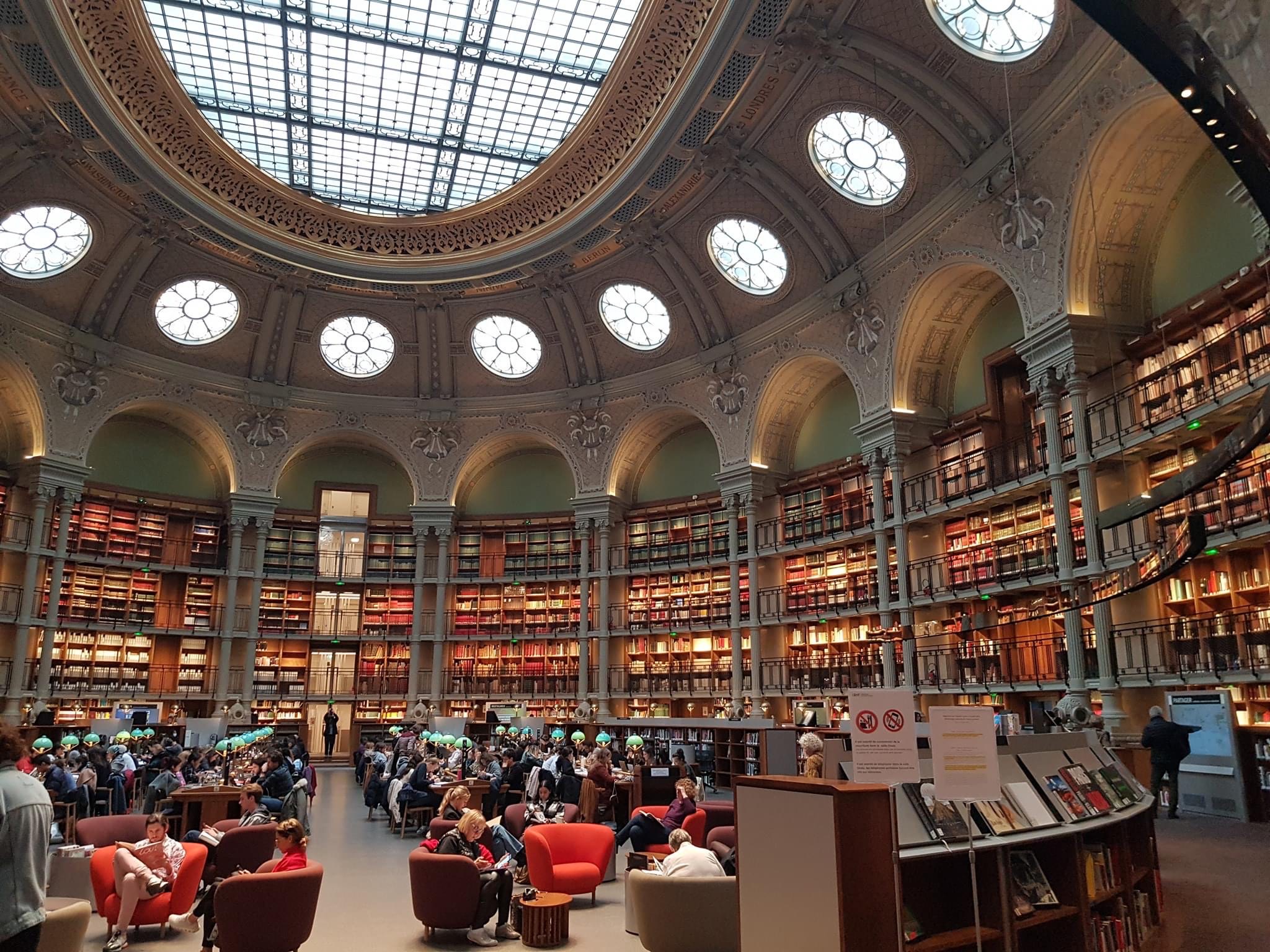


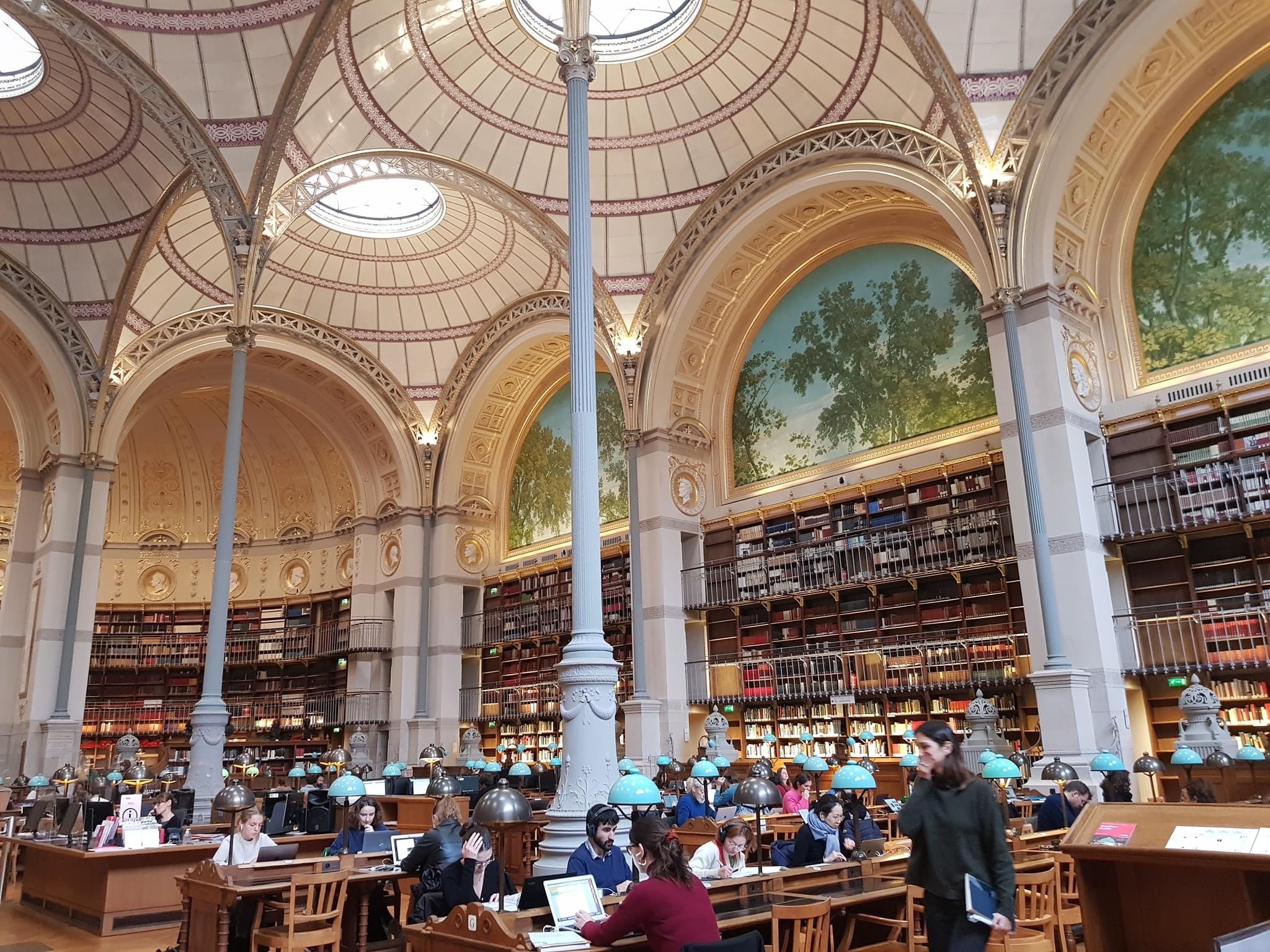

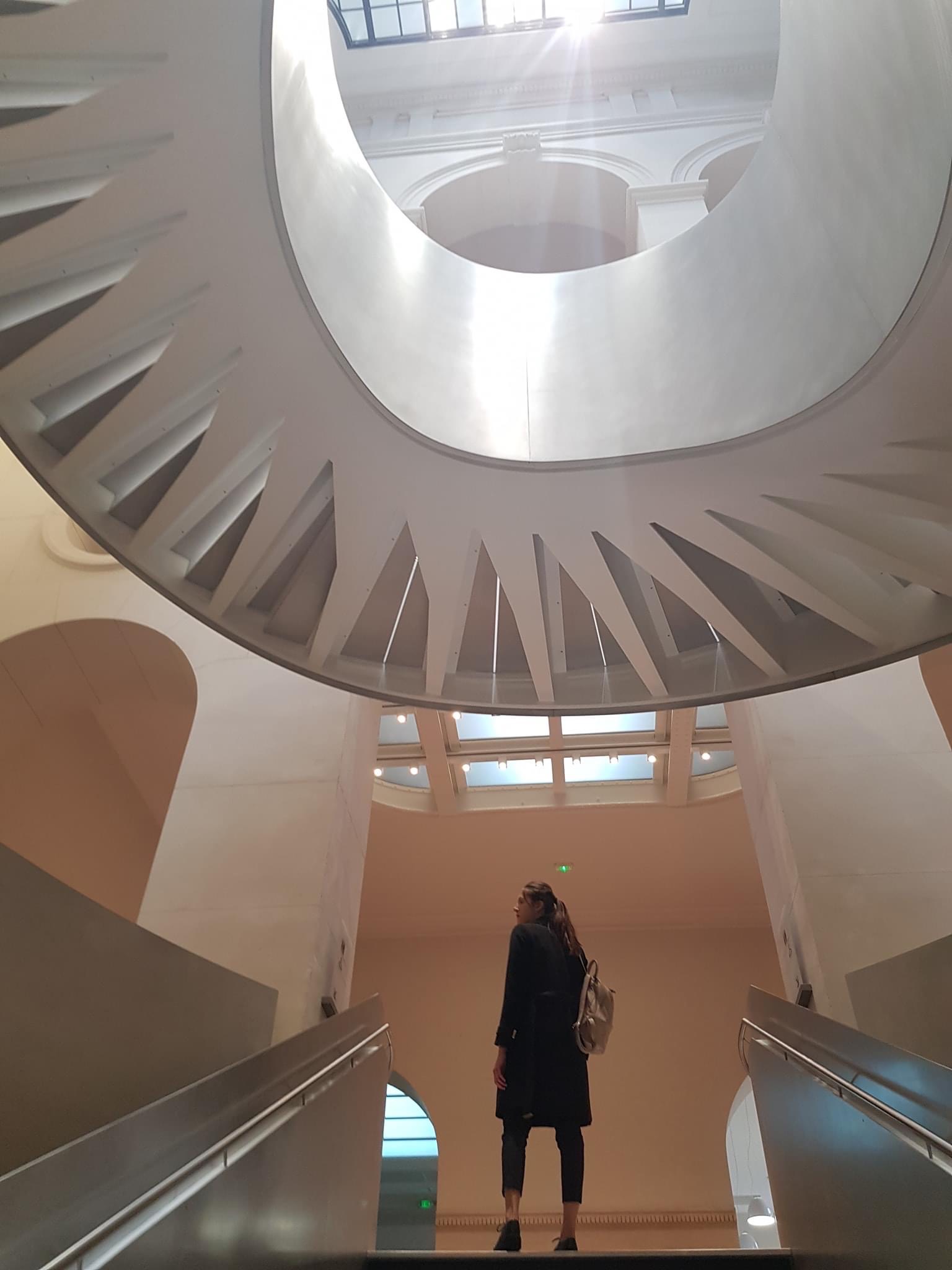
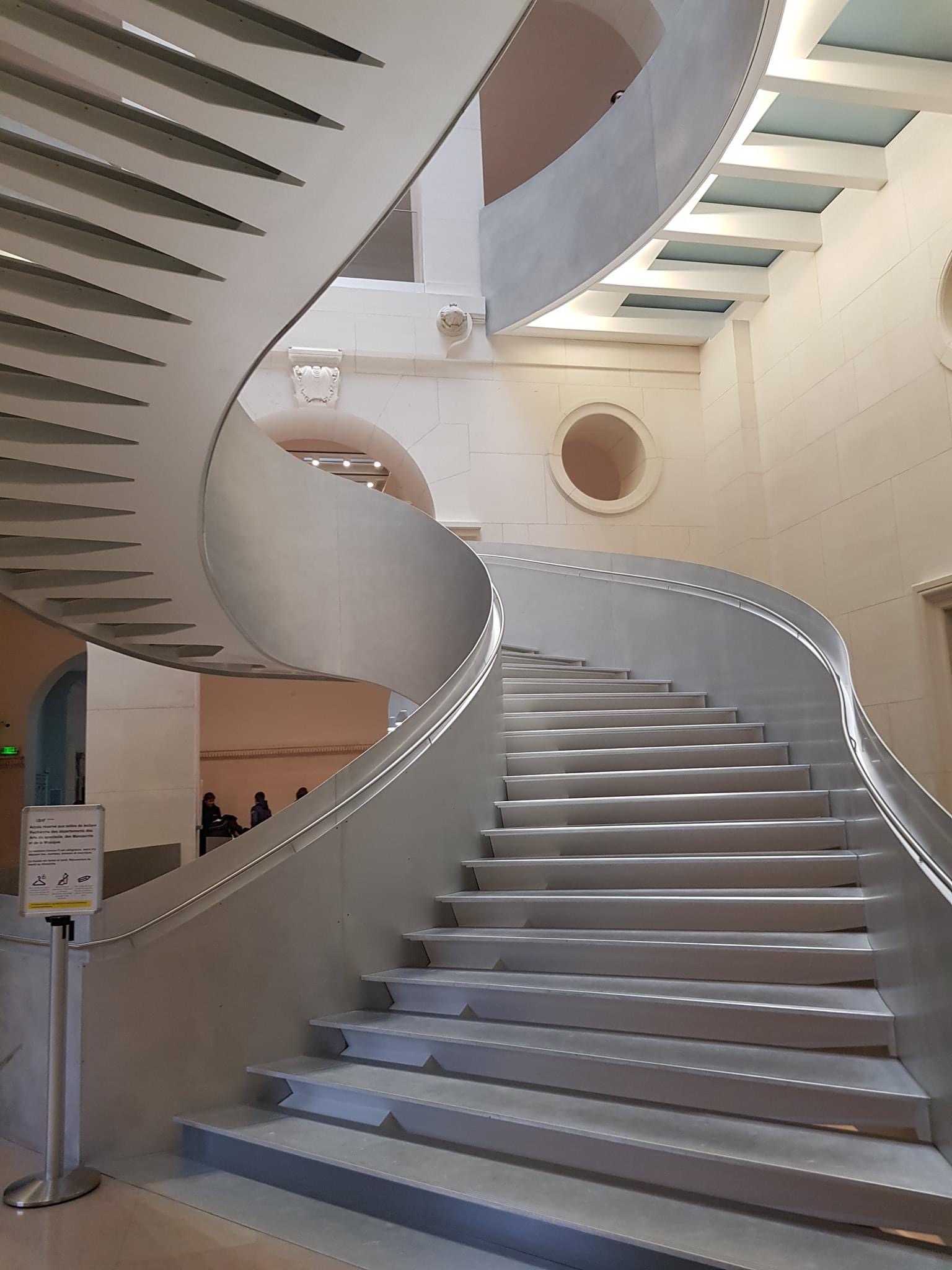
Reopening of the Richelieu site of the Bibliothèque Nationale de France
The historic Richelieu site of the Bibliothèque Nationale de France (BnF) located in the centre of Paris has just reopened to the public after 12 years of work. Among other things, the BnF has another important site inaugurated in 1995 in the south of Paris by the President of the Republic François Mitterrand and which now bears his name.
The BnF collects, archives, and restores all works published or edited in France. It also preserves national heritage collections and items from bequests or donations.
Its origin goes back to the king’s library installed in the Louvre in 1368 by Charles V. A decision made by King François 1st in 1537 required the creation of the collection, making it a legal requirement to deposit all publications in the national library. This decision now makes the BnF the largest library in France and one of the largest in the world. The BnF’s collections include nearly 16 million books and collections, as many prints and photographs, 2 million scores, 950,000 maps, plans and globes and some 370,000 manuscripts. It has been open to the public since 1692.
Among these collections are the first editions of Emile, or the education by Jean-Jacques Rousseau, and La Princesse de Clèves by Madame de La Fayette. Many books published before 1500, called incunabula, such as Le Kalendrier des bergers published in 1493, and very old illuminations, including the Great Chronicles of France dating from the late fifteenth century, are also kept there.
After many locations, the library moved in 1721 to the site of the current library in the former palace of Mazarin, rue Vivienne. New rooms were built during the Second Empire, one for researchers, and the other for the general public. The Mazarine Gallery designed by François Mansart became a museum in 1878. Finally, the impressive “Salle Ovale” 18 meters high was opened in 1936.
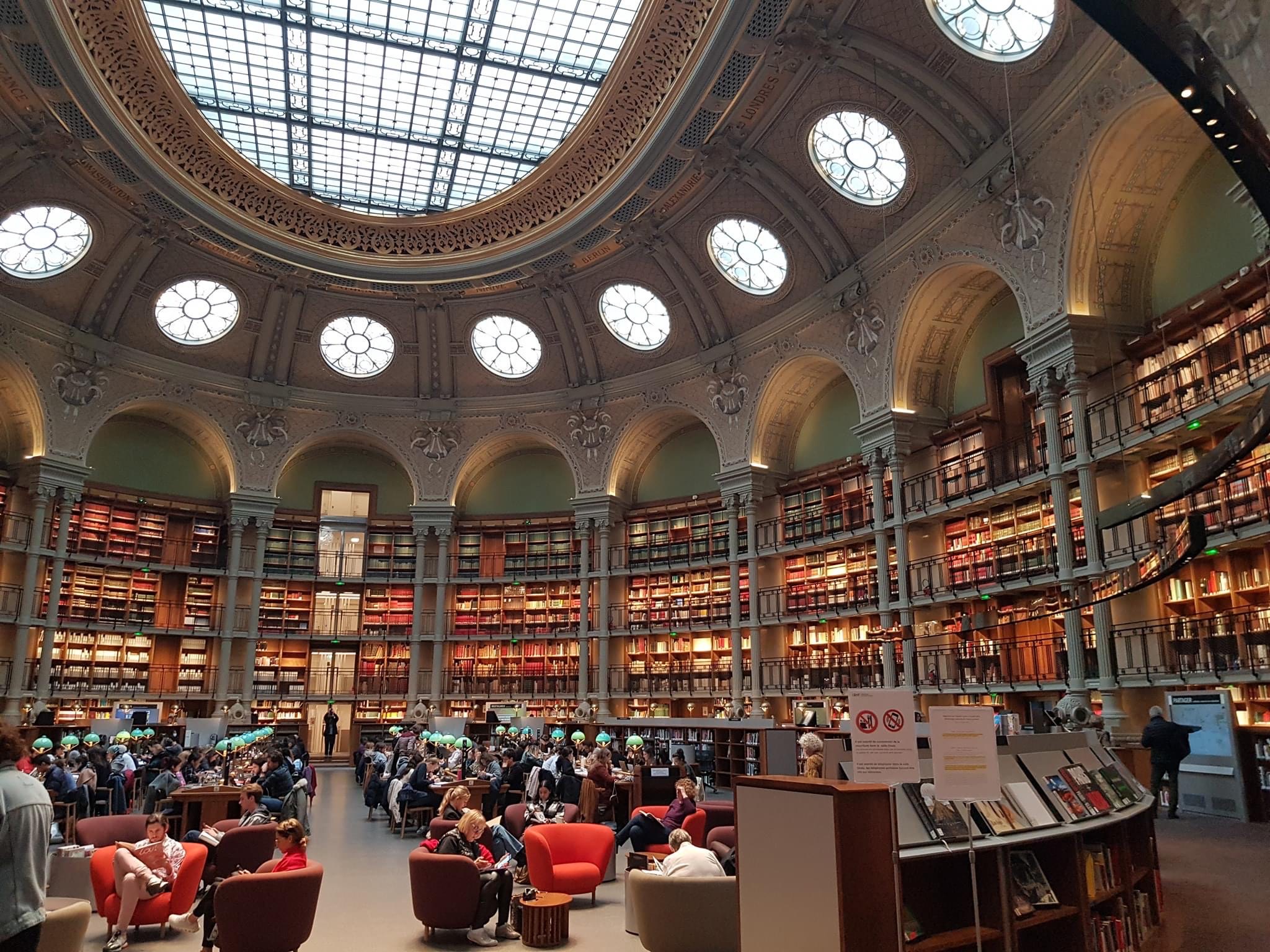
Since 2010, major redevelopment has been undertaken, which has just ended (2022). The site now includes 5 reading rooms, 4 of which are reserved for researchers, and the Oval room, equipped with 20,000 books and open to all, with free access. There is also a museum, a gallery of temporary exhibitions, a bookshop, and a café. The entirety occupies about 58,000 m².
Although the refurbishments have restored the prestige to this somewhat forgotten but architecturally renowned site, an old controversy has reappeared. The main staircase, a monumental work built before the war of 1914-1918 and inspired by the Louis XIV period, has been replaced by a rotating staircase made of steel and aluminum whose integration into the place is sometimes disputed.
Have you visited the renovated Bibliothèque Nationale de France yet? What are your thoughts on the NEW modern staircase? Do you like it?
Image credits – all photos copyright Jacqui Lucquin Edwards except where noted.
NOTES about IMAGES of Bibliothèque Nationale de France: All images copyright Jacqueline Lucuin Edwards unless specified otherwise.
- The original staircase, built in the style of Louis XIV, was demolished in favour of the new metallic staircase – see #2 below. Photo credit: A. Goustard – BnF
– https://amp.lefigaro.fr/culture/2017/01/12/03004-20170112ARTFIG00306-escalier-de-la-bnf-la-polemique-revient.php - The new metallic staircase in the renovated Bibliothèque Nationale de France – 2022.
- In the Salle Ovale, there are a number of interactive panels which give a huge amount of information about the library, and its collections, including this one that shows the physical structure and history of the Salle Ovale itself. Also refer:-
– https://salleovale.bnf.fr/la-salle-ovale-histoire-et-patrimoine-architectural#bnf-la-r-novation
– https://youtu.be/Yrifgs9mPuI
– https://youtu.be/DIn7_-_RE5s - Entrance on Rue Vivienne via the garden of the original Palais Mazarin.
– https://en.m.wikipedia.org/wiki/Biblioth%C3%A8que_nationale_de_France
– https://en.m.wikipedia.org/wiki/H%C3%B4tel_Tubeuf
– https://www.bnf.fr/fr/la-bnf-richelieu - Salle Ovale
Salle Ovale – the only one of five rooms with free access to the general public. Among its works is the enormous collection of Bandes dessinées (comic books/graphic novels).
– https://salleovale.bnf.fr/la-salle-ovale-histoire-et-patrimoine-architectural#bnf-la-r-novation - Salle Labrouste is one of four rooms accessible only to researchers.






